Abstract
OBJECTIVES: The current study examined the relationship between chronic disease status and the receipt of cancer preventive services over a 3-year period. METHODS: Adults (n = 4320) cared for by 167 nonacademic physicians in 42 primary care group practices were studied. Medical records were audited for each patient, as were patient responses to two questionnaires assessing health and sociodemographic characteristics. RESULTS: While the odds of having received counseling to obtain regular checkups were increased for men (1.56) and women (1.46) with hypertension, the odds were reduced (range = 0.32 to 0.81) for having received a sigmoidoscopy (women with diabetes or hypertension, men with hypertension or heart disease), fecal occult blood test (men with diabetes or heart disease, women with heart disease), mammogram or counseling about smoking (women with diabetes), clinical breast exam (women with heart disease), and Pap test (women with diabetes or heart disease). CONCLUSIONS: The presence of common chronic health problems in older adults is associated with lower levels of cancer screening services.
Full text
PDF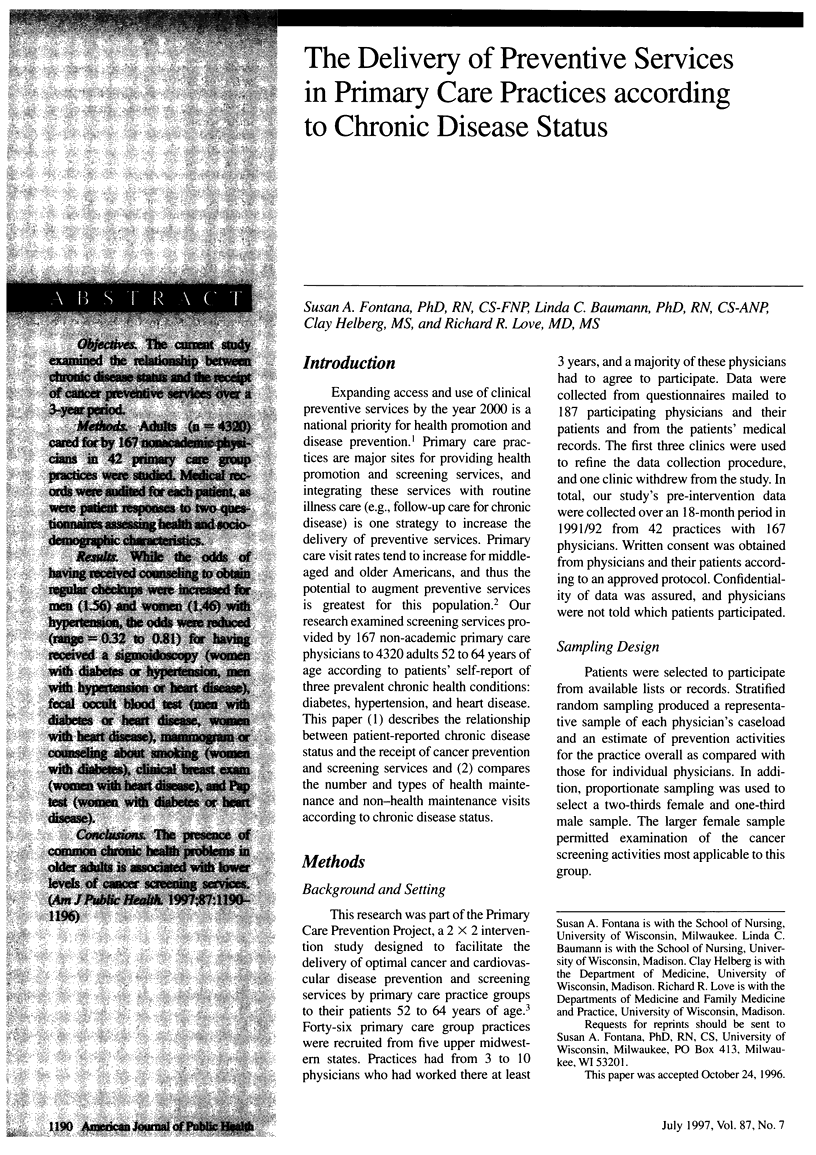
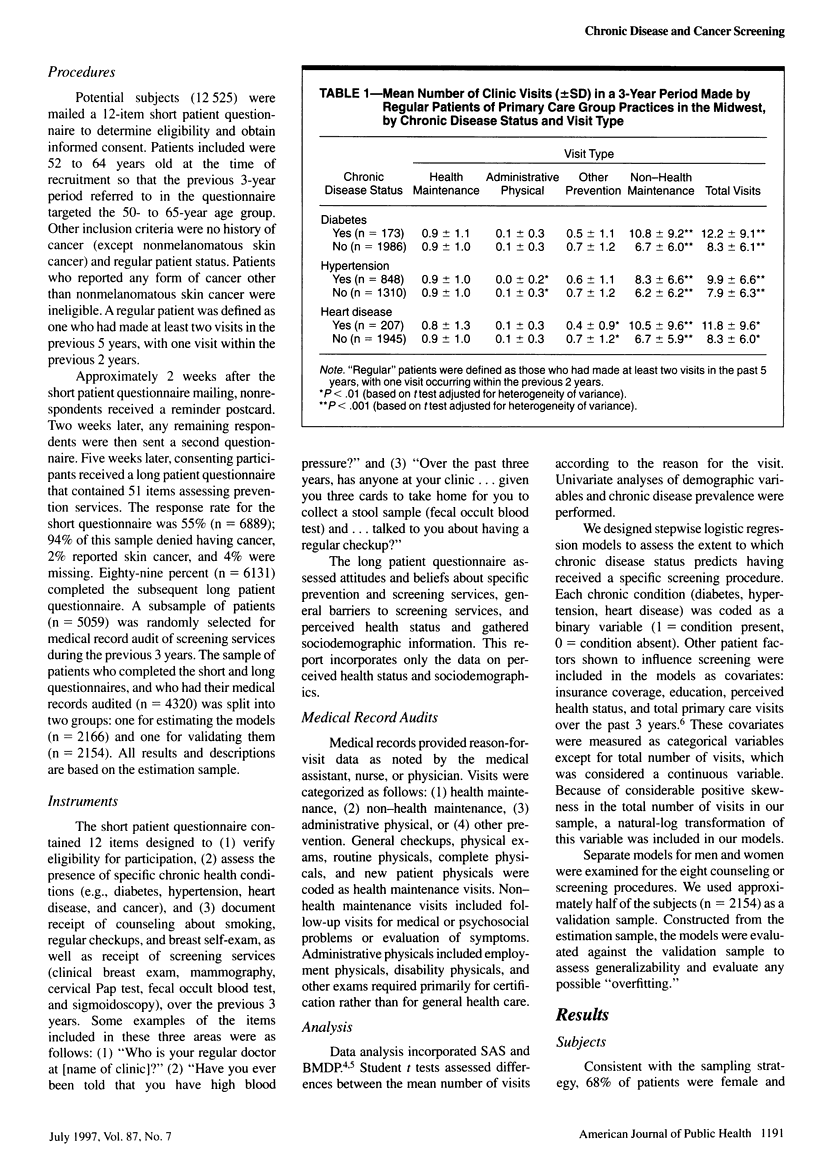
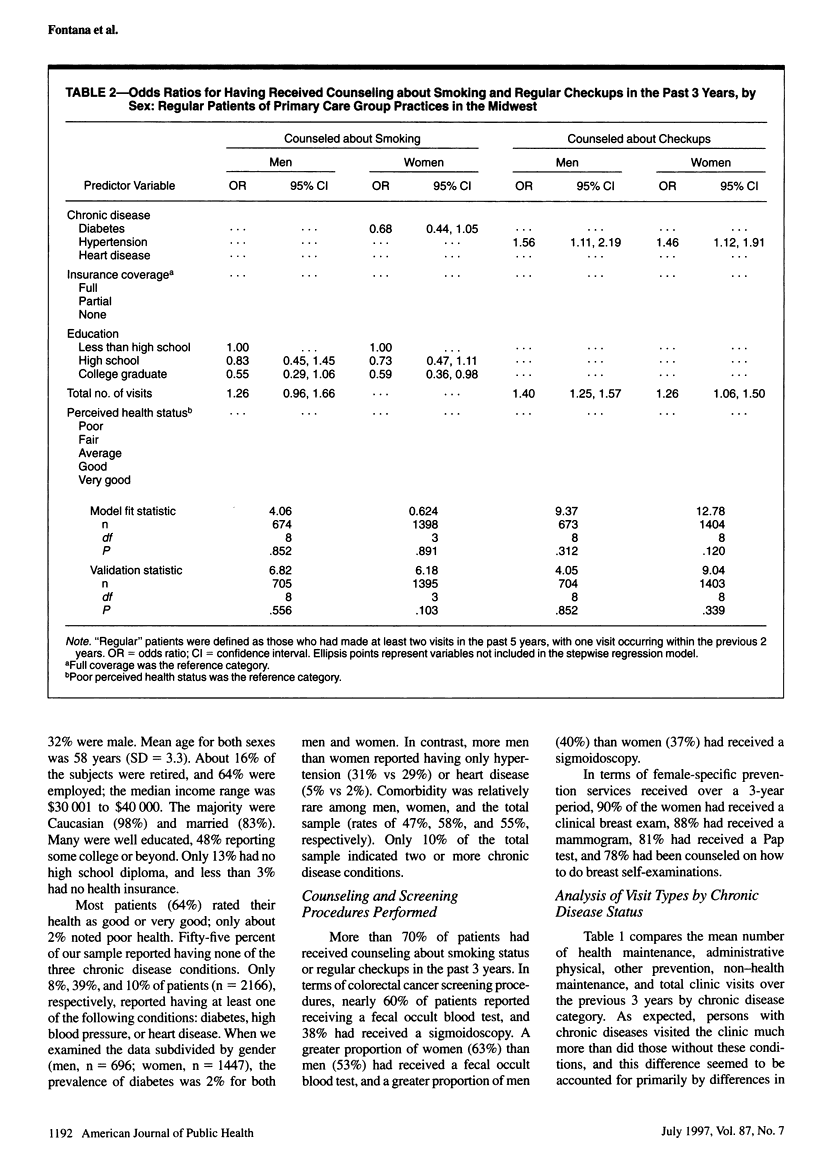
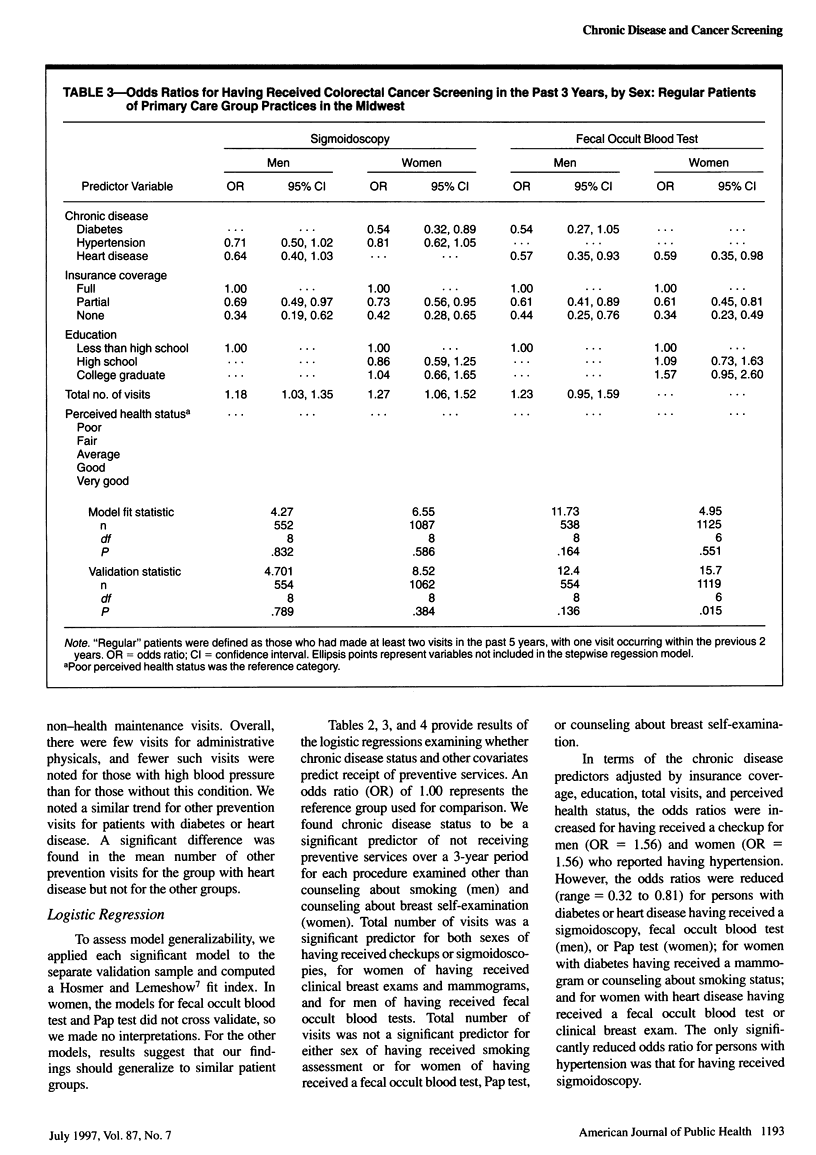
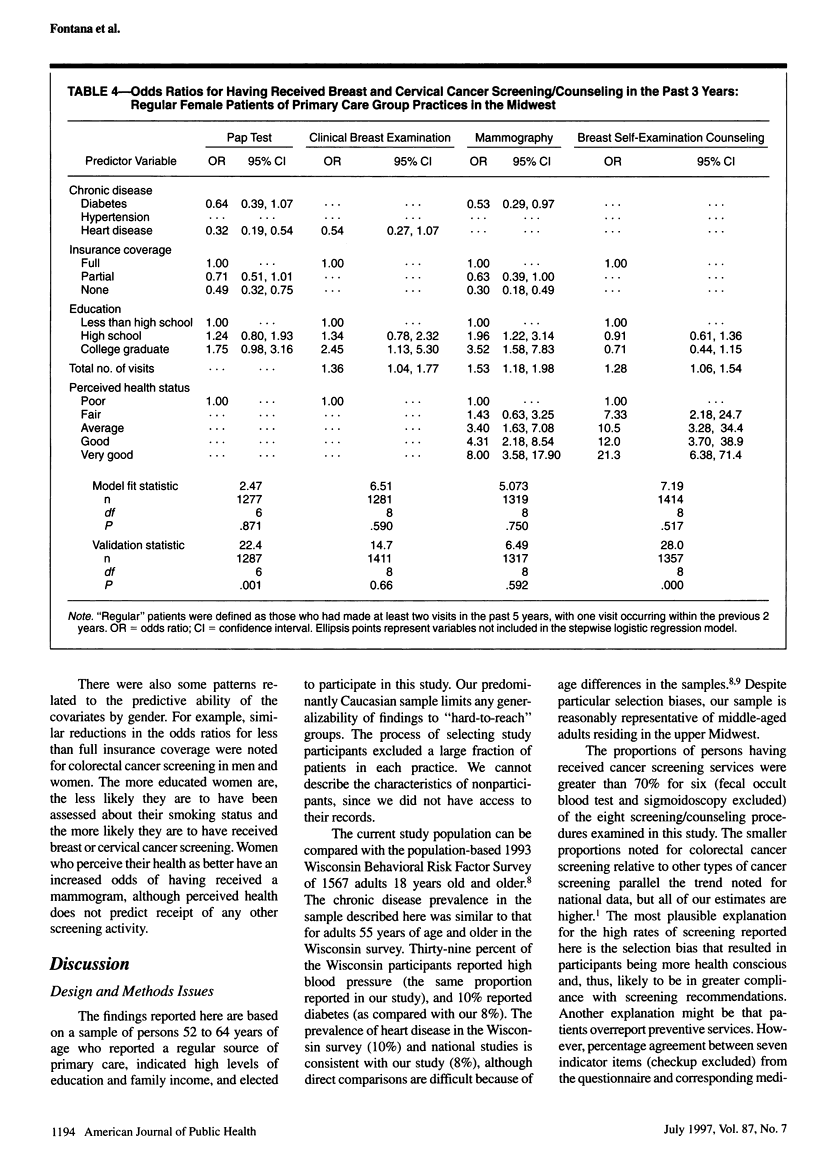
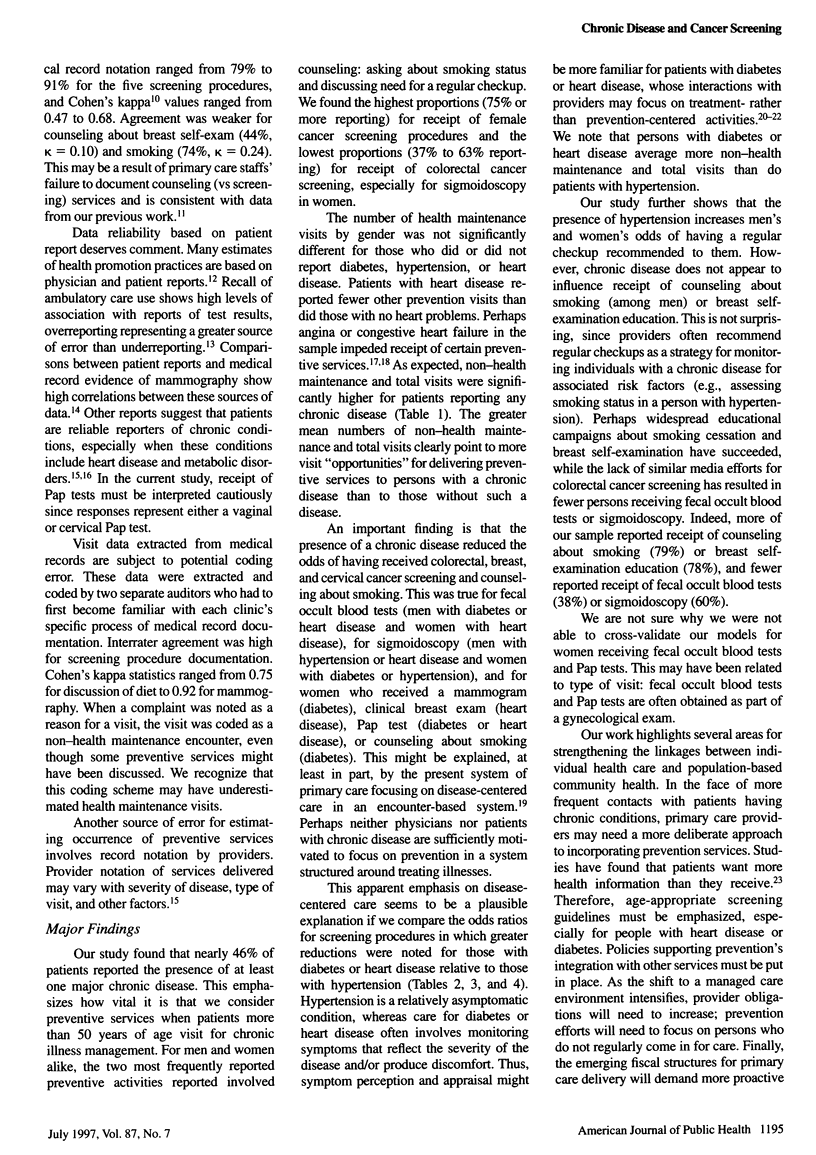

Selected References
These references are in PubMed. This may not be the complete list of references from this article.
- Baumann L. J., Leventhal H. "I can tell when my blood pressure is up, can't I?". Health Psychol. 1985;4(3):203–218. doi: 10.1037//0278-6133.4.3.203. [DOI] [PubMed] [Google Scholar]
- Bonneux L., Barendregt J. J., Meeter K., Bonsel G. J., van der Maas P. J. Estimating clinical morbidity due to ischemic heart disease and congestive heart failure: the future rise of heart failure. Am J Public Health. 1994 Jan;84(1):20–28. doi: 10.2105/ajph.84.1.20. [DOI] [PMC free article] [PubMed] [Google Scholar]
- Bostick R. M., Sprafka J. M., Virnig B. A., Potter J. D. Predictors of cancer prevention attitudes and participation in cancer screening examinations. Prev Med. 1994 Nov;23(6):816–826. doi: 10.1006/pmed.1994.1139. [DOI] [PubMed] [Google Scholar]
- Brown J. B., Adams M. E. Patients as reliable reporters of medical care process. Recall of ambulatory encounter events. Med Care. 1992 May;30(5):400–411. doi: 10.1097/00005650-199205000-00003. [DOI] [PubMed] [Google Scholar]
- Joos S. K., Hickam D. H., Borders L. M. Patients' desires and satisfaction in general medicine clinics. Public Health Rep. 1993 Nov-Dec;108(6):751–759. [PMC free article] [PubMed] [Google Scholar]
- King E. S., Rimer B. K., Trock B., Balshem A., Engstrom P. How valid are mammography self-reports? Am J Public Health. 1990 Nov;80(11):1386–1388. doi: 10.2105/ajph.80.11.1386. [DOI] [PMC free article] [PubMed] [Google Scholar]
- Lee P. R. Models of excellence. Lancet. 1994 Nov 26;344(8935):1484–1486. doi: 10.1016/s0140-6736(94)90295-x. [DOI] [PubMed] [Google Scholar]
- Love R. R., Brown R. L., Davis J. E., Baumann L. J., Fontana S. A., Sanner L. A. Frequency and determinants of screening for breast cancer in primary care group practice. Arch Intern Med. 1993 Sep 27;153(18):2113–2117. [PubMed] [Google Scholar]
- Meyer D., Leventhal H., Gutmann M. Common-sense models of illness: the example of hypertension. Health Psychol. 1985;4(2):115–135. doi: 10.1037//0278-6133.4.2.115. [DOI] [PubMed] [Google Scholar]
- Roter D. L., Russell N. K. Validity of physician self-report in tracking patient education objectives. Health Educ Q. 1994 Spring;21(1):27–38. doi: 10.1177/109019819402100105. [DOI] [PubMed] [Google Scholar]
- Sharpe P. A., Clark N. M., Janz N. K. Differences in the impact and management of heart disease between older women and men. Women Health. 1991;17(2):25–43. doi: 10.1300/J013v17n02_02. [DOI] [PubMed] [Google Scholar]


